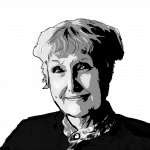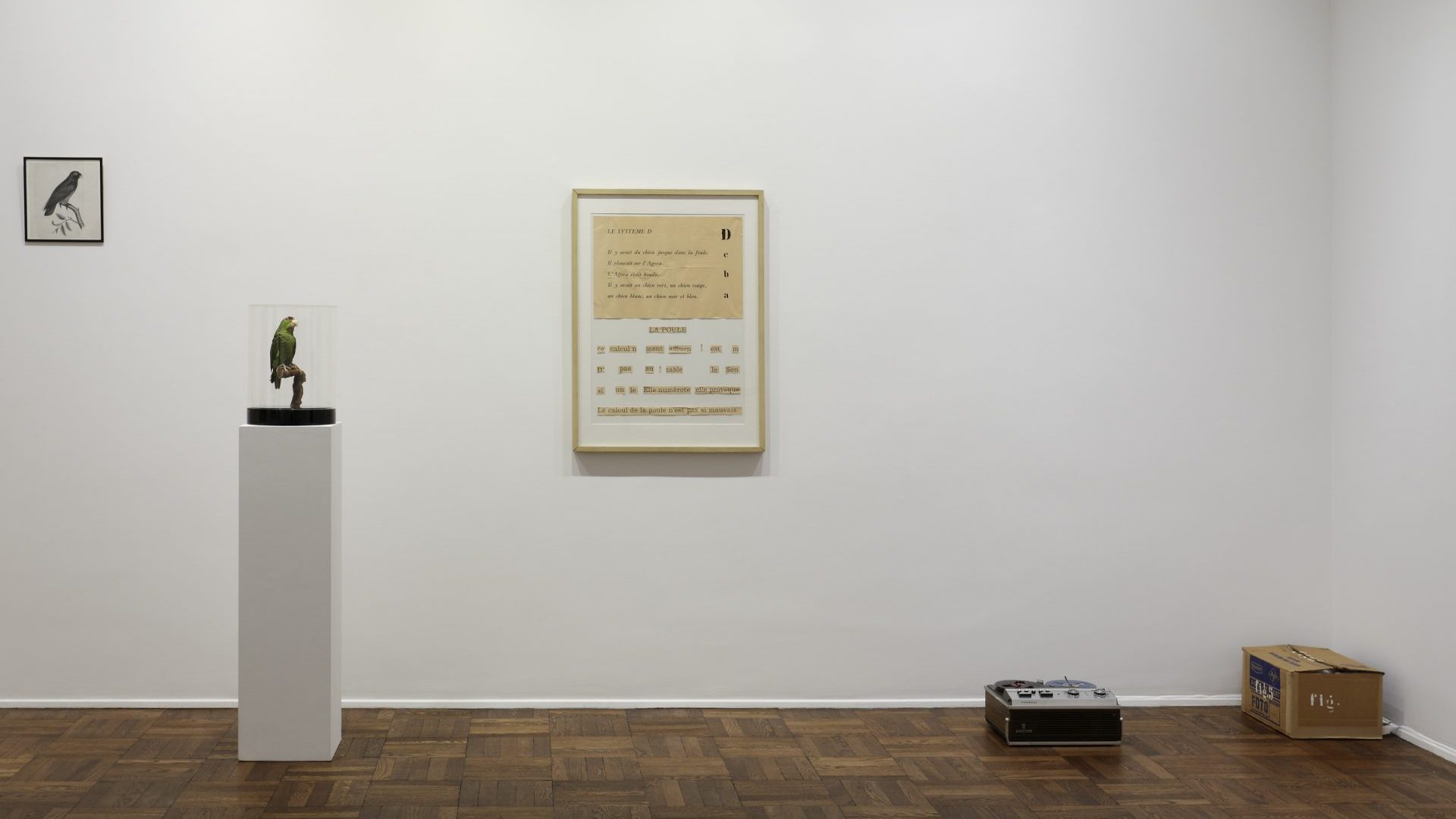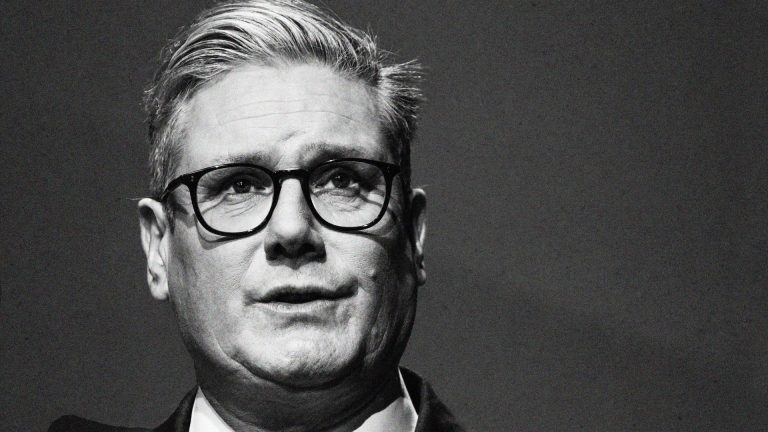A Georgian townhouse in London’s Mayfair seems an unlikely setting for Michael Werner Gallery’s exhibition Everyone Is an Artist, showing a trio of important 20th-century conceptual artists: Joseph Beuys (1921-1986); Marcel Broodthaers (1924-1976) and James Lee Byars (1932-1997).
In this house, with its grand hallway, wide staircase and suite of perfectly proportioned rooms, a visitor might expect to find William Hogarth’s The Graham Children on the wall, which shares the same date as the building: 1742. Instead, there’s a careful arrangement of objects, paintings and films across two floors, and even the use of vitrines, favoured by Beuys and Broodthaers, serendipitously recall Georgian display cabinets from the 18th century.
I’m told that the impetus behind the project was to tease out the common ground between the gallery artists, to bring them into dialogue. “The work is about the concrete and the non-concrete,” says Jordan Bosher, my guide. “And each have a poetry about them.”
German artist Joseph Beuys would doubtless have appreciated that the first room in which his work is displayed has wooden parquet flooring that came from the old Tate Gallery (what is now Tate Britain). Beuys was drawn to the physical properties of materials, but also developed a metaphorical vocabulary around them, said to originate when he was a Nazi pilot during the second world war.
The story goes that when the plane in which he was flying was shot down over the Crimea, Beuys was rescued by a nomadic group of Tatars, who coated his body in fat and wrapped him in a felt fabric. Although the rescue was probably fictitious, these two materials were prized in the artist’s practice: felt because it offered insulation and warmth (spiritual as well as physical); fat because he regarded this flexible, mutable substance as basic to life.
Hanging on the gallery wall on a wooden hanger is Beuys’ Filzanzug (Felt Suit), number 87 of a set of 100. It comprises a greyish buttonless jacket with pocket flaps and a pair of trousers with a crease down each leg. As part of his artistic persona, Beuys dressed in a fishing vest and fedora, and was rarely seen in public without, but although the suit on the wall is intended to represent him, he never wore it.
Instead, it is part of a multiple artwork, the malleable qualities of the fabric untested and unshaped by the warmth and sweat of a human body. Today, such a garment suffers from less favourable associations with patriarchy and faceless bureaucracy.
Opposite the grey suit hangs another of an altogether more flamboyant character. Untitled, by James Lee Byars, is a suit of gold lamé, less likely as everyday wear, but in this instance, Byars went about town in it. “Byars would dress as his work,” explains Bosher. “He had a tailor who would make these beautiful gold suits for him […]. He had this real sense of ceremony.”
Born in Detroit, Byars eschewed the city’s industrial heritage and urban decay. Living in Japan for several years, he sought the finest art materials – the most luxurious inks and costliest papers – to make work exploring beauty, perfection and death. In an adjoining room above the marble fireplace hangs The Perfect Tear. Taking the form of a tondo – a large circular format – the canvas is painted a lustrous black, like polished onyx, and it is framed in carved gilded wood that ripples out.
Almost imperceptible at its centre is the tiniest bead-like droplet of water, such as you might find on the leaf or petal of a 17th-century Dutch still life. Interested in eastern philosophy and the shared symbols of east and west (a preoccupation he had in common with Beuys), Byars has bestowed permanence on the transitory in the grandest way imaginable.
While Beuys also used gold for its alchemical symbolism, both in his objects (Hare Stone, a pillar of basalt, is stencilled with a golden hare) and his performances (How to Explain Pictures to a Dead Hare) the Belgian artist Marcel Broodthaers started out with humbler ingredients, such as mussels and egg shells. A former avant-garde poet, leading a life of general impoverishment, Broodthaers decided in 1964 to make the switch to art.
His first exhibition was titled I, too, wondered if I couldn’t sell something and succeed in life. Poetry never left him, however, and texts and words recur throughout his practice, from the very first sculptural object – a stack of his final poetry collection partly embedded in plaster (Pense-Bête, 1964) – to a piece at Michael Werner Gallery, Dites partout que je l’ai dit (Say everywhere what I have said).
This arcane installation which, since its creation in 1974, has been considered among Broodthaers’ most significant, consists of five parts: a print of a parrot; a stuffed parrot in a bell jar; a framed text; an audiotape of the poet reciting a monologue that swings between “I” and “you”, and a cardboard box. In a similar way to his compatriot, René Magritte, Broodthaers was interested in the gaps and contradictions that lay between language and image. Magritte’s Ceci n’est pas une Pipe (aka The Treachery of Images: a painting of a pipe with the title beneath it) was a theme taken up by Broodthaers.
In Dites partout que je l’ai dit he references a previous installation featuring a live parrot in a cage, and questions the value of the retrospective favoured by museums and the practice of revisiting old work. He also plays with ideas of copying and reproducing: the parrot mimics; the print of a parrot is a reproduction of a parrot that mimics; the stuffed parrot was once a parrot, is it still?
The printed disrupted text in a frame is now an artwork, and the audio recording of Broodthaers’ voice places him in the same category as the stuffed parrot; the fifth element, the cardboard box, is marked with the figure 5.
Downstairs, three video screens set side by side reproduce footage of these artists’ actions. In La Pluie (The Rain) Broodthaers writes outside in a garden using pen and ink on paper while a shower of water washes away his words; in Eurasienstab, Beuys is diligently working a lump of fat positioned in the corner of an art gallery; in World Question Center, James Lee Byars, looking every bit the shaman in an exaggerated fedora hat, asks 100 people to find a question important to their personal development. “Why is it so difficult to make useful mistakes?” asks one participant.
The title of the exhibition, Everyone Is an Artist, is a quote from Joseph Beuys, and while radical at the time, in the intervening years it has lost some of its originality, sounding more like a bullet point in the Arts Council’s Let’s Create strategy. Some works, too, have not aged as well as others, and the connections between each artist might have been more pointedly made.
But when you walk away from the townhouse it’s surprising how the theatricality of their performances and the physicality of their objects stay with you.
Everyone Is an Artist: Joseph Beuys, Marcel Broodthaers and James Lee Byars; until November 9, 2024; Michael Werner Gallery, 22 Upper Brook Street, London.











